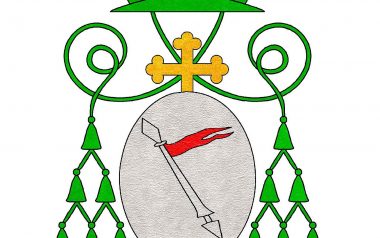The Boccacci
Ancient families in the history of Brescia and Lake Garda
The Boccacci family, of which we have very ancient news, was among the most eminent of the Valvassori of the Bishop-Count; a Boccaccio from Manerbio, perhaps of the same lineage as the Luzzago, or Confalonieri (see similar emblem), was consul of the Municipality of Brescia in 1168, then a Guelph party as then were almost all the families of our Valvassori; then the fortunes of the cttadina politics changed and the Boccacci were among the most prominent in the Ghibelline part. At the time of the bishop Berardo Maggi they were already invested with the fief of Castel Venzago; in the XIV century they took part in the internal struggles until, with the advent of Pandolfo Malatesta, having favored the enterprise of Facino Cane, their fate changed and the decadence began. In 1412 the mayor of Brescia, in the name of Pandolfo, declared rebels Caterina, widow of Giacomo along with four children: Giuliano with his wife Luchina, Martino, Lorenzo and Margherita, and Franceschina, widow of Guido (perhaps brother of Giacomo) with sons Filiperio, Oria and Zia. They fled to the Veronese and then tried to return and conquer Desenzano, Rivoltella and Castel Venzago. Rejected, all their property was confiscated and divided between the Marquis of Mantua and the Municipality of Lonato, who then bought the part of the Gonzagas for 950 gold ducats. During the ephemeral lordship of Filippo Maria Visconti (1419-1426) the Ghibellines resumed vigor and even the Boccacci reconquered Castel Venzago and held it until 1440. The Municipality of Lonato, however, did not give up and a long dispute arose which was resolved to the advantage of Lonato; meanwhile the Boccacci had given substance to their possessions, already shaken by so many troubles. On the principle of the century XVI badly reduced in the finances, they entrusted to a Averoldi as mediation. It is not known how the Averoldi in 1539 obtained as much as desired, and it was ordered from Rome to the City of Lonato to return the feud or the excommunication against the usurpers. The archpriest of Lonato did not want to apply his excommunication to his people, also because Venice had been ordered not to execute the Roman excommunication. Pressures were made on Branchino Boccacci (about 1492) because he desisted from applying the papal mandate and these, it is not known for what reason, by deed of July 13, 1540, he renounced the mandate and the long fight ended. The Boccacci were then divided into four branches and no longer had the chance to face new quarrels; their property was all in Seniga between the town of Regona and the Comella “under the flood”. They had always contracted good marriages with Brescian families: a sister of Nicola, Vittoria, married Gerardo Martinengo, Ancilla, Timoteo Appiani and Domitilla, Piero Caprioli; Alberic q. Nicola was to be the son of Cigola, from whom he inherited a garden “with a certain little house” in Mercato Nuovo in the evening (since it bordered the upstream road and noon we can believe that it was that garden owned by Fenaroli today). He then owned in Seniga other lands a manor house with a garden in the square and “the top of a tower from the middle up, undivided with the heirs of Paolo Averoldi on a canton of the Castle”. But this branch of Alberic died in that sixteenth century while he continued the work of Antonio with his son Branchino, already known; son of these was Orpheus (No. 1515) who had had by his wife Cecilia. Orfeo, by his wife Ginevra, had two sons, Cesare (No. 1566) and Carlo (No. 1575). In Brescia they lived modestly with a woman in a rented house. Thus the family went on for another century: Caesar q. Orfeoseposed Julia and had, among others, Orpheus (No. 1606); he was the father of Carlo (n. 1635) who had three sons from Vittoria: Pietro (n.1676), Francesco (n.1678) and Gerolamo (n.1686), who were the last of the family.
Historical sources: Fausto Lechi “Dimore Bresciane, cinque secoli di storia”

